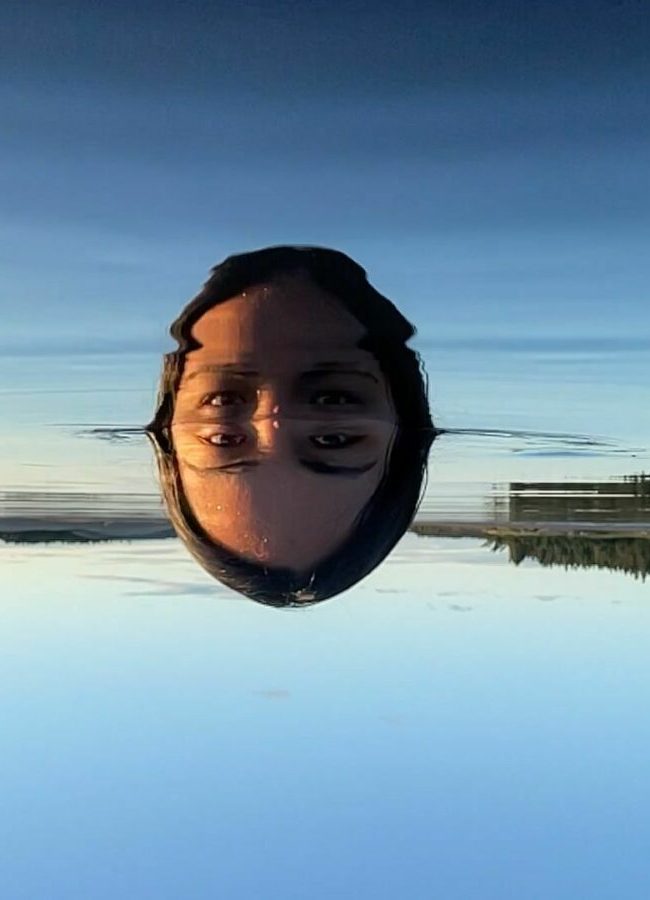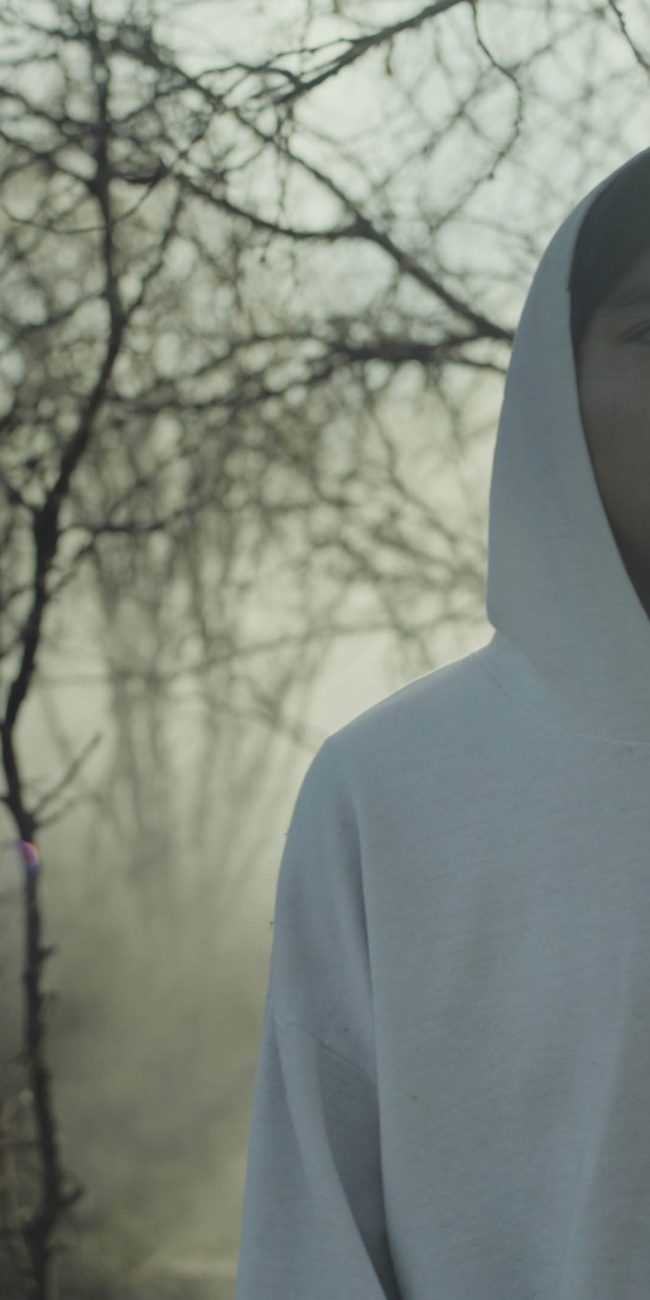A Conversation With Matthew Salleh and Rose Tucker (BARBECUE)
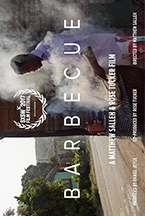 I met with director/cinematographer/co-editor Matthew Salleh and producer/co-editor Rose Tucker, on Monday, March 13, 2017, at SXSW, to discuss their fascinating documentary about global barbecue traditions, entitled (appropriately enough) Barbecue (which I also reviewed). Shot in gorgeous 4K resolution, the movie is a visually striking anthology of compelling stories, and is about much more than just roasting meat (though not necessarily the best film for vegetarians to watch); rather, the film explores the communal nature of the human animal, and the many ways in which we converge as a species, regardless of country of origin. Here is a condensed digest of our conversation.
I met with director/cinematographer/co-editor Matthew Salleh and producer/co-editor Rose Tucker, on Monday, March 13, 2017, at SXSW, to discuss their fascinating documentary about global barbecue traditions, entitled (appropriately enough) Barbecue (which I also reviewed). Shot in gorgeous 4K resolution, the movie is a visually striking anthology of compelling stories, and is about much more than just roasting meat (though not necessarily the best film for vegetarians to watch); rather, the film explores the communal nature of the human animal, and the many ways in which we converge as a species, regardless of country of origin. Here is a condensed digest of our conversation.
Hammer to Nail: So, let’s talk about your decision to make a pan-global movie about community through the lens of roasting meat. How did you choose that specificity of topic?
Matthew Salleh: Yeah, well, we’re Australian, so we have our opinion of what good barbecue is, and then a few years ago we had a film at the Slamdance Film Festival. Afterwards we took a little road trip from Vegas to New Orleans, stopped in central Texas and, you know, always have the camera in the back of the car, and we started speaking to all the different pit masters in the area, and basically realized that these people had this incredible passion and philosophy on life. The barbecue was so diverse from the barbecue in Australia, but we sort of do it for the same reasons, to get people together, have a celebration. And we thought, “Well, let’s go deeper. Let’s just see how people cook meat over fire in the world and what that actually means as a sort of global process.” Very quickly we started realizing that everyone in the world, when it’s time to celebrate or bring the community together, meat goes on fire. (laughs)
Rose Tucker: We really wanted to make a film that showed what people have in common. Particularly at the moment, there’s a lot of angst and people who are not interested in what other cultures do, and we wanted to show, “Look! All these cultures are incredibly different, but here’s one thing that we all do that we all have in common, and we all do for the same reasons.”
HtN: (laughs) Are you saying this is not a time in human history where everyone is coming together in one great global community?
MS: Well, what was interesting is, you sort of get stuck in Western civilization and you might believe that. But we were fortunate enough to travel to every continent on the globe and speak to people in all sorts of communities, from wealthy Western communities down to the poorest, most isolated community, and I would say that the world actually is closer together. It is more global, and that’s what we wanted to show here. The film sort of jumps from one country to another: you’ll be in a fine restaurant in Tokyo and then, with the snap of a finger, you’re in rural Australia. We met all of these people, and the similarity of human experience between people means, I think, that they are closer together. Closer than people might have you think.
HtN: Right. Well, here’s hoping. So, speaking of that, how did you choose which countries, and one state in the United States, which gets its own title – Texas always wanted to be its own country …
MS: (laughs) Everyone told us that they once were, so … (laughs)
HtN: So how did you make the choices?
RT: We wanted it to be as broad as possible, so we wanted it to be as diverse as possible. We come from a town in Australia called Adelaide, which is multicultural, and we started by talking to people in our own network and our own community. Everyone would be like, “You’ve got to go to South Africa. My uncle lives in Johannesburg. He does braai [South African barbecue] all the time. You’ve got to go talk to him.” And we’d be like, “All right!” So it would always start with a personal connection, most of the time.
Obviously, we did a lot of online research, as well. So with places like the Za’atari Refugee Camp [on the Syria/Jordan border], we’d done a lot of research, beforehand. There’s a lot written about that place. There’s even a Twitter page that documents the goings-on in the camp, and it was through that Twitter page that we discovered there was a barbecue restaurant in the camp. So, yeah, we came to discover or choose countries based on our research and where that led us, but always trying to keep it as broad as possible and trying not to do too many places that were too similar.
MS: And we were basically a team of two, traveling the world. We had another producer, Daniel Joyce, working with us, from Adelaide. Having just this team of two meant that we could very organically follow a story. We weren’t this big sort of moving beast of a film set that had to be like, “We have two days in this place, and then we have to jump to this place.” We tried to always have a couple of weeks in each country, and we tried to always have at least the first thing worked out. You know, you’d come into a place, you’d film with someone, and then they’d say, “Oh, you have to meet my best friend,” and then we’d go meet the best friend, and they’d be like, “You have to talk to this guy’s uncle,” and we would sort of just let the story take us where we wanted to.
When we were in Uruguay…we always used a local translator or guide…and when we were in Uruguay, we had a young photographer who had just done some photo essays of rural Uruguayan life, so we found his work on the internet, and we just said, “This is the project we’re doing,” he got a car and we just drove. It was during Carnaval, and there was a small town that was setting up for that night’s event, so we stopped to have a look, and we went to the local bar and told them what we were doing and the next day we were having an asado [Uruguayan barbecue] with the mayor. We were very fortunate. You know, Rosie and I are partners in real life, so we’re not scary, and we’ve got a very small footprint as a production, so we can just sort of go and move wherever we want and find the story.
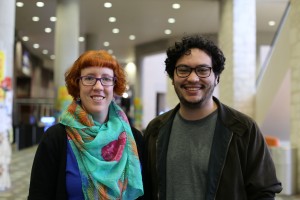
Director/cinematographer/co-editor Matthew Salleh and producer/co-editor Rose Tucker
HtN: Speak for yourself, that you’re not scary. I’m terrified right now.
(Matt and Rosie laugh)
HtN: So, speaking of your collaboration, you, Matt, are the shooter – the DP – and you, Rosie, I assume are the sound recordist.
RT: Correct!
HtN: And then you both edited. You’re co-editors.
MS: That’s correct.
HtN: How long have you been working together? How did that start?
RT: We’ve been working together for over ten years. We met just out of university. Matt had just started up a production company with a bunch of other filmmakers, and our early projects were short films where we basically just learned the ropes.
MS: We didn’t go to film school.
RT: Neither of us had any kind of training.
HtN: What? You didn’t go to film school? I’m out of here …
(Matt and Rosie laugh)
RT: I have a science degree and Matt has an arts degree. (laughs) Matt learned everything he knows from watching old films; he worked at a video store. I learned everything I know just by turning up on set and figuring it out. And so we basically both had day jobs for a very long time. Over the years, we started taking the film side of things more seriously, and then we actually turned to documentary, probably in the last 5 years, first a series of shorts and then this our first feature.
HtN: Excellent. What did you shoot on? It’s shot in 4K and looks beautiful.
MS: Thank you!
HtN: Speaking of film schools, you should know that I am the chair of a university film department, so…
(Matt and Rosie laugh)
HtN: So I am very curious, and I am sure my students would be, too, to know what you shot on.
MS: Yeah, we shot on the Sony a7S, which is a DSLR.
HtN: Yes, we have some. They’re very small!
MS: They’re very small, and yet they shoot beautifully.
HtN: With good low-light sensitivity, as well.
MS: Low-light sensitivity.
RT: Speaking of lights, we didn’t bring a single light on the whole shoot.
MS: Yeah. And it was more than just a practicality. Yes, the a7S has an amazing dynamic range, and you can shoot in insanely low light, but what it can also afford you is this chance to have a small footprint. Outside of that pragmatic side, we also really wanted to be able to film using the light of these cultures. I think it’s a very culturally imperialist thing to come into this, say, Mongolian ger [yurt], with a small fluorescent light powered by a car battery, and shoot a giant film light into it. That light then has no meaning. If we’re trying to show the diversity of these locations, I think light is a great way to do it.
You go from the flickering light of one country to the bright neon lights of Tokyo to the beautiful…you know, when we were shooting in Sweden, it’s like the sun didn’t go down ’til two in the morning. It had that beautiful magic hour that lasted all night long. And we’re starting to learn that light and weather influences how people choose to live their lives, especially when it comes to the outdoor barbecue process. So, we wanted to capture everything in natural light. And, for the nerds, we also used a Shogun [by Atomos] to bring it up to 4K, because the other a7S that did 4K hadn’t been invented when we started.
HtN: The a7S II.
MS: Yeah. It did not exist when we started shooting. They brought it out when we were halfway through, and we were like, “Mother …” (laughs) Whatever…
HtN: You mentioned the transitions from one kind of light to another; how did you come up with your strategy for transitions, in general? For many of them, you have this swelling musical chord that then ends, followed by sound from the next scene, as an audio bridge, a sort of traditional J cut that draws us in. How did you design these techniques?
MS: Well, it all starts with the music, and I’d worked with the composer, Chris Larkin – an Australian composer – a bunch of times, before, on short films and a lot of other projects. And we really didn’t want to get into that habit, that everyone gets into, of falling in love with the temp track, and then having to find something that matches that’s not too similar. You know, that rubbish process you go through. And I used to study classical music, as well, so me and Chris have always had this in-depth conversation about how we want to handle music in our film. He started writing actual suites of music before even footage had been shot, based on long conversations and on where we both knew we wanted the film score to go. And then we basically had these tracks, and then I could start cutting to them. In that way, you get that enjoyable process of cutting to temp, which is what filmmakers love doing, but then not having to have that brutal process of compromise at the end. So it was this back and forth.
And I feel for Chris; I think we damn near killed him, because it meant that there was a lot of rewriting and a lot of music that hit the floor. He would write something, and I would edit, inspired by that, and then he’d be inspired by the pictures and go, “No – do-over, do-over!” And then we’d come back in again, and sort of do that. And what it did was that we knew where some of those links were going to go, and how the music was going to pull from one to the other, because we had those pieces all to play with. So basically, we cut with this music that fit each country, and we then had all of these countries set up, but we didn’t have a determined order of how to edit. We really waited until we could see how it would work and how the story came together. It was 95% of the way through the edit that we actually started putting it together.
RT: In terms of bringing in the audio early, we just like that little hint of “where are we going to end up next?”
HtN: Right. It keeps us guessing.
RT: Exactly! I know that when we come into Sweden, we can suddenly hear this kind of swimming-pool scenario, and splashing going on, and then we cut to these ridiculous guys in their tiny, tiny swimming shorts …
MS: (laughs) And as filmmakers, we traveled the world to get these stories, but for the film viewer, we can take them there in an…I feel like it’s getting back to the most basic principles of film. You know, sometimes we felt that our biggest inspiration was that old movie with the train coming towards the screen, you know? We can go from this place in Japan to rural Australia; we can cut from a refugee camp to Texas; and use all of those classic techniques to make that as profound a change as possible. And we use those old French New Wave techniques of bringing in the sound as layers over each other.
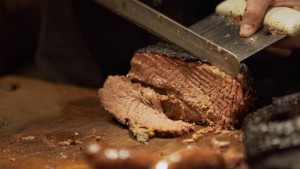
HtN: Well, cinema is the art of time and space, right? The ability to cut freely between them is what makes it interesting and unique.
MS: Exactly!
HtN: Speaking of editing, you made a choice not to include any sort of lower-thirds titles on your characters. Please speak to that.
MS: Yeah, we sort of had this set of rules. Documentaries are really interesting to me nowadays, because I think that a lot of people don’t work with, and think of, documentary as a cinematic form. It sort of just becomes a form of video news on the big screen. So, in that sense we want to create interesting drama, just as you would in any cinematic device. You don’t bring up a lower-thirds every time a new character walks into The Godfather…(laughs)…though that might help understand the plot a bit better…(laughs)…but we wanted to keep the focus and attention on these people, and not put their business card down at the bottom. And so in that sense we tried to get away from a lot of the tropes of documentary filmmaking. We said at the start: no Ph.D.’s in front of bookcases; no looking off-camera when the lower-thirds splashes up. Move away from all of that, so that people can have a cinematic experience and experience them as characters, as opposed to “Documentary Subject #5,” or whatever.
HtN: I think that would have been a great title, actually: “Documentary Subject #5.”
(They laugh)
RT: And just on that, instead of doing the lower-thirds, we do the credits at the end, and all those credits are actually written in the native languages of those countries. Some very interesting fonts going on there! (laughs)
HtN: Final question. You have some shots in the film of dogs – of species that are not being eaten – occasionally I think there’s a cat.
MS: The occasional cat. A lot of dogs.
HtN: There are enough of them that I began to notice them. It almost made me want there to be a little element of a discussion about the animals we eat vs. the animals we don’t eat. Because this is about meat; it’s not a film for vegetarians. Which is fine. You can make another film later for them. Did you ever consider exploring this issue of domesticated animals, or did you just like those shots? Why put those in there?
RT: It was very intentional.
MS: It was a bit of an indulgence, on our behalf, traveling 200 days on the road like that. We live in New York now, as well, and we’re not allowed to have any pets in our apartment, and so they just became our little pets during the film. (laughs) But also, there was always a dog. So we’d always grab it in the shot. You know, everyone’s sitting around, and there’s a cute dog in the corner, so you always grab the shot. And we were like, “We’re not going to use these shots.” And every culture in the world has dogs.
RT: It was just another way of drawing those connections. It’s not just the food. It’s so many other things. Man and dog. Man and meat.
MS: We wanted to show this diversity in the way that people do things and the way they live their lives. Everyone’s world looks so visually different; the barbecue they cook is so different. But any time we could find those similarities, those threads that we could pull through it, that was definitely icing on the cake.
HtN: Well, thank you very much. I really enjoyed the film. Good luck with it!
Matt/Rosie: Thanks!
– Christopher Llewellyn Reed (@ChrisReedFilm)








